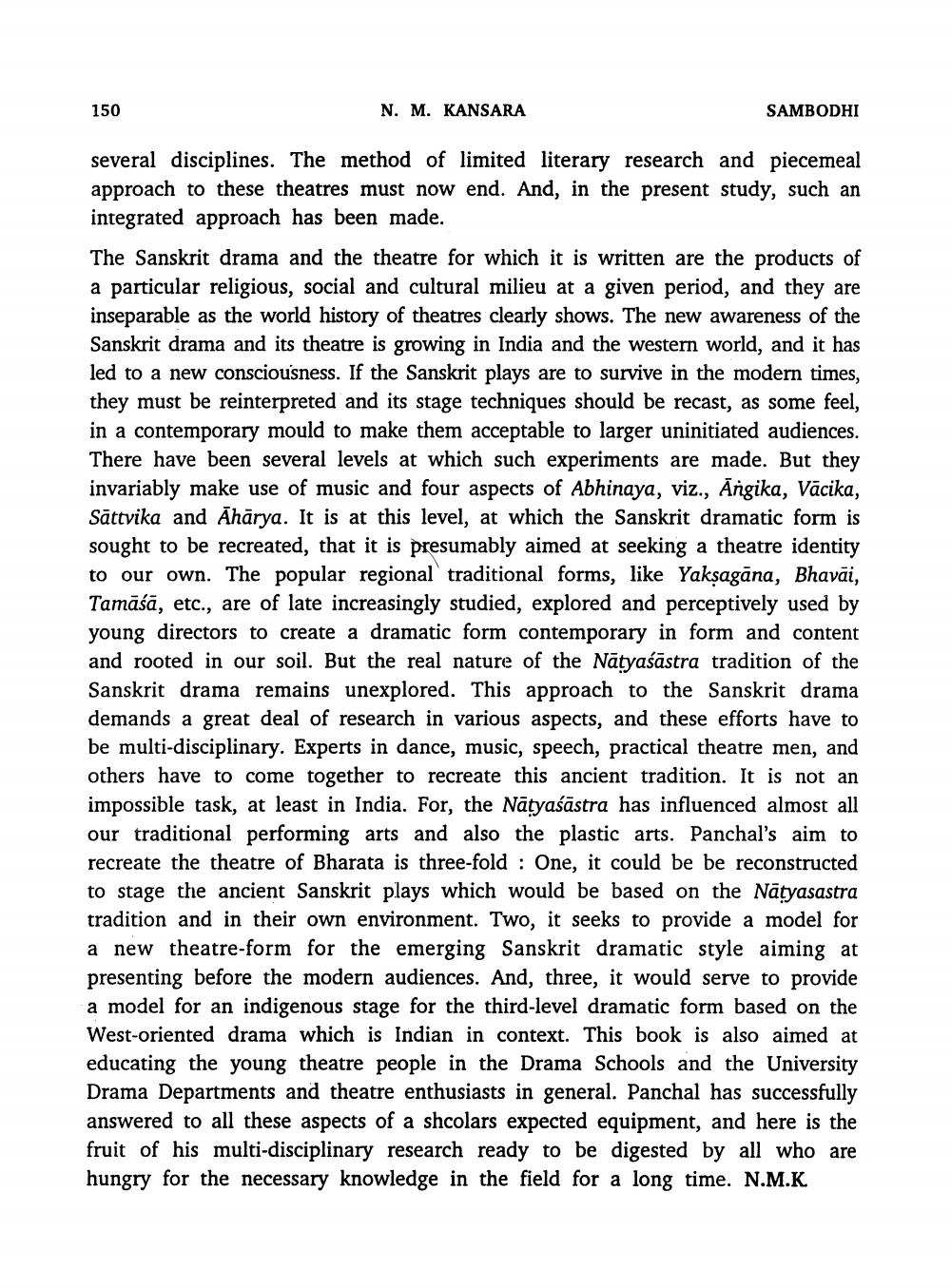________________
150
N. M. KANSARA
SAMBODHI
several disciplines. The method of limited literary research and piecemeal approach to these theatres must now end. And, in the present study, such an integrated approach has been made.
The Sanskrit drama and the theatre for which it is written are the products of a particular religious, social and cultural milieu at a given period, and they are inseparable as the world history of theatres clearly shows. The new awareness of the Sanskrit drama and its theatre is growing in India and the western world, and it has led to a new consciousness. If the Sanskrit plays are to survive in the modern times, they must be reinterpreted and its stage techniques should be recast, as some feel, in a contemporary mould to make them acceptable to larger uninitiated audiences. There have been several levels at which such experiments are made. But they invariably make use of music and four aspects of Abhinaya, viz., Angika, Vācika, Sāttvika and Ahārya. It is at this level, at which the Sanskrit dramatic form is sought to be recreated, that it is presumably aimed at seeking a theatre identity to our own. The popular regional traditional forms, like Yaksagāna, Bhavai, Tamāśā, etc., are of late increasingly studied, explored and perceptively used by young directors to create a dramatic form contemporary in form and content and rooted in our soil. But the real nature of the Nātyaśāstra tradition of the Sanskrit drama remains unexplored. This approach to the Sanskrit drama demands a great deal of research in various aspects, and these efforts have to be multi-disciplinary. Experts in dance, music, speech, practical theatre men, and others have to come together to recreate this ancient tradition. It is not an impossible task, at least in India. For, the Nātyaśāstra has influenced almost all our traditional performing arts and also the plastic arts. Panchal's aim to recreate the theatre of Bharata is three-fold : One, it could be be reconstructed to stage the ancient Sanskrit plays which would be based on the Natyasastra tradition and in their own environment. Two, it seeks to provide a model for a new theatre-form for the emerging Sanskrit dramatic style aiming at presenting before the modern audiences. And, three, it would serve to provide a model for an indigenous stage for the third-level dramatic form based on the West-oriented drama which is Indian in context. This book is also aimed at educating the young theatre people in the Drama Schools and the University Drama Departments and theatre enthusiasts in general. Panchal has successfully answered to all these aspects of a shcolars expected equipment, and here is the fruit of his multi-disciplinary research ready to be digested by all who are hungry for the necessary knowledge in the field for a long time. N.M.K.




